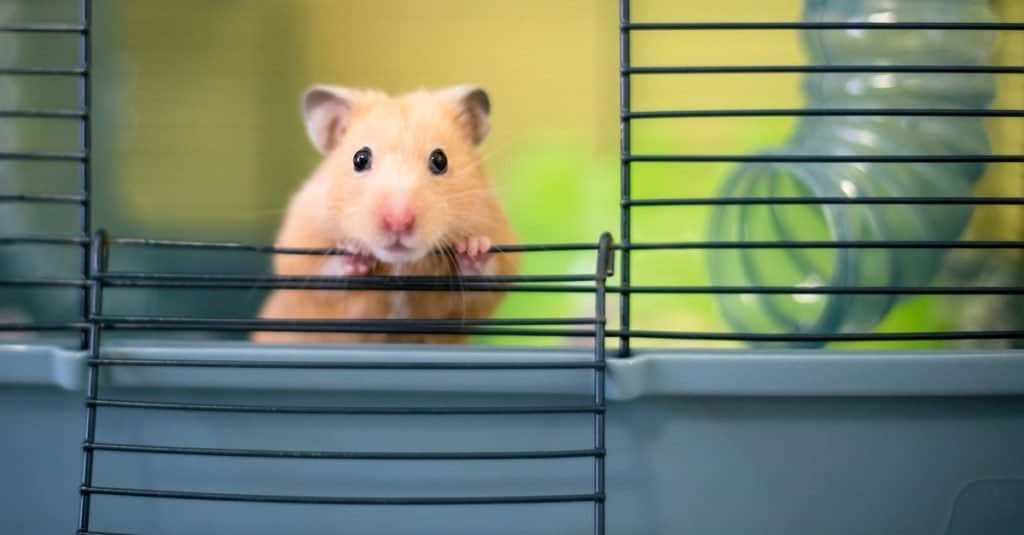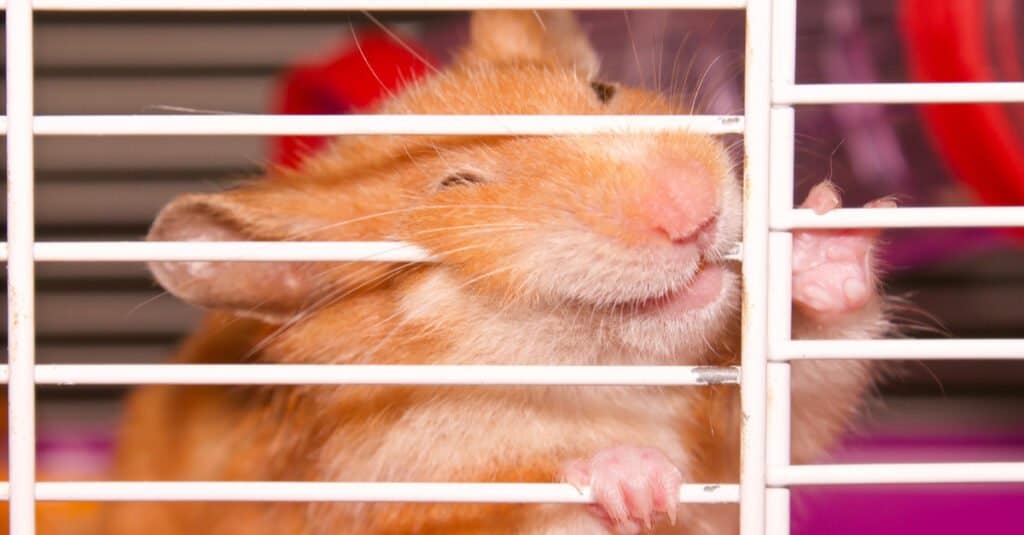The hamster is a rodent from the order Rodentia and the family Cricetidae. Known for its cuteness and ability to run as quickly backward as it does forward, the hamster is, without a doubt, a favored pet around the world. They also have characteristically short tails which distinguish them from other rodents. One thing they have in common with most other animals is that they poop. In this article, we will uncover everything you have ever wanted to know about hamster poop. Stay with us.
What Does Hamster Poop Look Like?

Hamster poop is quite small and oblong and it comes in the form of pellets, with a visibly dry and solid texture.
©iStock.com/Mukhina1
If you have ever taken an interest in hamsters, you must have wondered what their scat actually looks like. Well, here it is- a hamster poop is quite small and oblong and it comes in the form of pellets, with a visibly dry and solid texture. It is either black or brown and when it’s not, it could be an indication of ill health or a change of diet. For instance, when hamster poop is green, it’s likely because they had been eating green leafy vegetables prior. It could also be an indication of diarrhea, stress, respiratory infections, and exposure to cold temperatures.
If you are seeing a mix of other colors, it’s also likely because of the food mix they had previously gotten.
Why Is Hamster Poop So Small?
As is the case with most other small rodents, hamster poop is actually quite small. The reason for this is that hamsters themselves are small measuring between 2-6 inches long and weighing about 6 ounces on average. Given their size, it would be odd if their droppings looked as big as a dog’s, wouldn’t it? Even then, there are variations in hamster poop. Baby hamsters tend to excrete larger scats than their adult counterparts, most likely because they eat more.
How Do Hamsters Poop?
Hamsters have a digestive system comprising the cheek teeth, pouches, stomach, upper small intestine, pancreas, small intestine, appendix, large intestine, rectum, and anus. Much of the digestion takes place in the small intestine and the remnants make it to the rectum as dry pellets. The pellets then exit through the anus. So, as is the case with some other animals and even humans, hamsters poop through their anus located at their hindquarters.
Where Do Hamsters Poop?

As pets, hamsters tend to poop all over the place.
©Mary Swift/Shutterstock.com
In the wild, hamsters don’t have a particular place they poop. They would usually just pick out a corner where they are sure to not get caught slacking by predators. When taken in as pets, they tend to poop all over the place until they get potty-trained. And even after they get their own litter boxes, there is no guarantee that they still won’t poop all over the place. Since they don’t have the control that humans and other animals have, sometimes they really can’t help themselves but poop when they feel like it. They can even poop in the owner’s hands in some cases.
How Often Do Hamsters Poop?

Hamsters poop once every hour.
©sirabhop/Shutterstock.com
Hamsters have a very active and fast metabolism which causes them to poop several times a day. If we were forced to round it up to a number, we would say they go as often as once every hour, but don’t be surprised if they go more often than that. Since their food gets processed inside pretty fast, they often feel the urge to poop as soon as they are done eating. This is perfectly normal and shouldn’t be a cause for concern for pet owners. Matter of fact, you should be concerned if your hamster is not pooping as frequently as it normally does.
Does Hamster Poop Smell?
Poop from many animals and even humans gives off a very foul and pungent smell. Not so with hamsters. Hamsters often excrete tiny, dry pellets and this does not come with an iota of stench whatsoever. However, the poo does contain ammonia and when it piles up in a particular place or area, it could smell pretty strongly.
Do Hamsters Eat Their Poop?
It is not uncommon for certain animals to eat their poop and the hamster is one of such animals. Hamsters tend to scour their night droppings for nutrients. This is naturally healthy for them to do since they are coprophagous animals. The night droppings often contain lots of vitamin B12 as well as other vitamins. While it may seem disgusting to us humans, we must trust that they know what they are doing. And, they do.
Do Hamsters Pee?
Like many other rodents, animals, and humans, hamsters pee. Their pee is white and milky. It could also come in other colors like yellow, red, brown, or orange. Much like it is with their poop, the color of hamsters’ pee can be an indication of a problem, diet change, or temperature change. Yellow pee is pretty normal in hamsters and does not indicate anything severe. Red pee is a little concerning and one might even mistake it for blood, however, it could be a result of food like carrots, a change in temperature, or the hamster’s bladder pigmentation. Brown urine suggests a possible problem with the liver especially when it is consistent, and orange urine is usually a result of dehydration.
Is Hamster Poop Dangerous?
Since hamster poop is not foul-smelling or disgusting, one might be tempted to think it isn’t dangerous. However, this is absolutely not true. Hamster poop is quite dangerous as it sometimes carries the infamous Salmonella bacteria which causes Salmonellosis in humans. They may also carry a disease known as the lymphocytic choriomeningitis virus which can be transmitted to humans by exposure to their droppings or pee. Symptoms include muscle aches, fever, nausea, vomiting, malaise, anorexia, and headache.
One way to steer clear of these viruses and bacteria is by washing your hands thoroughly after contact with hamsters or their poop. Their cages as well as litter boxes should also be spot-cleaned every other day and deep-cleaned at least once a week. Also, we know they are very cute animals but try not to kiss them or bring them close to your face.
Up Next:
- Hamster Gestation Period: How Long Are Hamsters Pregnant?
- 10 Incredible Hamster Facts
- Male VS Female Hamsters: How To Spot The Differences
The photo featured at the top of this post is © iStock.com/MajaArgakijeva
Sources
- Hamster Pros, Available here: https://hamsterpros.com/are-hamsters-dangerous-to-humans/
- Hamster Geek, Available here: https://hamstergeek.com/what-does-hamster-poop-look-like/
- PETSGAL, Available here: https://www.petsgal.com/hamster-poop-the-complete-guide/
Thank you for reading! Have some feedback for us? Contact the AZ Animals editorial team.







